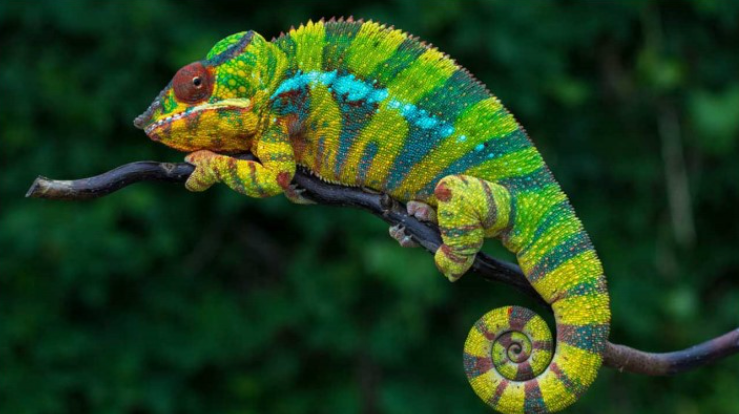Ellen Geller Kamaras
Hamas’ barbaric October 7th attack on Israel, and the war which has been raging in its wake, have had a significant impact on U.S. college campuses, giving rise to the question of whether they are a viable option for Jewish students.
Since October 7th, anti-Semitism has surged in much of the world, and especially in colleges.
I still remember when one could separate anti-Zionism from anti-Semitism, when those opposed to Israel’s policies and actions did not necessarily show hostility to all Jews. Today, however, anti-Zionism and anti-Semitism are one and the same, as the enemies of the Jewish State openly express their contempt for Jews generally. Indeed, Rabbi Jonathan Sacks, a”h, famously described anti-Zionism as “the new anti-Semitism.” And so the anti-Zionism currently running rampant in academia – to the point where many university administrations could not even bring themselves to unambiguously condemn the October 7th terror attack – poses a risk to all Jews on campus.
“Into the Lion’s Den”
On the campuses of Ivy League schools, private universities and state universities throughout the country, protestors loudly chant calls to “free Palestine,” and cry, “From the River to the Sea, Palestine will be free” – a thinly veiled wish for the destruction of the world’s only Jewish State.
One night in late October, a group of Jewish students at New York City’s Cooper Union were forced to barricade themselves in a school library as frenzied pro-Palestinian activists pounded menacingly on the windows. Around a week earlier, an instructor at Stanford University was suspended for ordering his Jewish students to stand in a corner, labelling them as “colonizers.”
The response by universities to Hamas’ attack, and to the anti-Semitism on their campuses, has resulted in a “donor revolt,” with key philanthropists announcing the discontinuation of their financial support of certain elite institutions. These include Ronald Lauder, Marc Rowan, Jon Huntsman (Penn); Bill Ackman and Leslie and Abigail Wexner (Harvard); and New England Patriots owner Robert Kraft (Columbia).
Naturally, the situation has triggered fears among Jewish students and parents. Many Jewish parents are, understandably, fearful of sending their children away to colleges where they may be harassed, isolated, and subject to bias by professors with passionate antipathy to Israel.
What, then, are the preferred options for our generation’s college-age youth? Do we keep our children close to home, or allow them to expand their horizons despite the anti-Semitic sentiments that permeate throughout this nation’s colleges?
Of course, even before October 7th, most of us understood that children cannot be kept in a bubble forever.
“Every child grows up in a bubble,” says pediatrician Dr. Meg Meeker. “The real question for parents is: what kind of bubble do you want your child to grow up in? Like-influences support kids in the direction they are traveling, and we as parents are the ones who decide which direction we want our kids to go. This is responsible parenting.”
But does responsible parenting involve steering our children away from certain schools due to the fear of anti-Semitism? Moreover, if we pull our children out of excellent universities, or don’t send them to college at all, does that mean we grant the anti-Semites victory?
More than 55,000 people have joined the Facebook group “Mothers Against College Anti-Semitism” to address these and similar questions. Members share reports of anti-Semitism at colleges, and exchange information about the safest schools for Jewish kids. One mother said she wasn’t willing to send her teen “into the lion’s den.” She explained that it would be different if her child was in graduate school or already established at a college, but “freshman year of college is complicated enough,” adding the anti-Israel vitriol sounded daily on campuses could easily lead to physical violence.
What Jewish Youths – and Their Parents – are Saying
This past February, BBYO, the world’s leading pluralistic Jewish teen movement, completed a thorough survey of Jewish high school students to assess the impact of the 10/7 terrorist attacks on young American Jews. The findings were grim, with Jewish teens reporting an increase in anti-Semitic discrimination and incidents. More than 70 percent of the youngsters in the survey said they experienced harassment either in person or online. Well over half (64 percent) of the participants responded that anti-Semitism on campus was a significant factor in choosing a college.
Twelfth grader Ethan Smith says that he withdrew his application to the University of Pennsylvania after hearing the university’s president, Liz Magill, testify to Congress that calling for the genocide of Jews wouldn’t necessarily violate the institution’s rules. He plans to attend Rutgers University in his home state of New Jersey. Rutgers has a large Jewish population, and Ethan thus felt he could be comfortable there without having to continually look over his shoulder.
Bianca De Almeida, a high school senior from Miami, says she was very affected by the December Congressional hearing, in which the presidents of Harvard University and MIT declined to state whether campus policy prohibited calls for the genocide of Jews. Many youngsters, Bianca reports, did not apply to those schools out of safety concerns. Indeed, Harvard reported a 17 percent decline in early decision applications.
A different survey, commissioned by the Jewish campus group Hillel International in March 2024, found that an overwhelming majority of Jewish parents of high school juniors and seniors say the October 7th attack and its aftermath have affected their children’s college plans. Alarmingly, 19 percent said they were considering not enrolling their children in any college.
The Hillel survey was conducted three months after the shocking Congressional hearing on campus anti-Semitism, and more than five months post October 7th.
Over 80 U.S. Department of Education investigations into possible violations of the Title VI anti-discrimination law in colleges and schools have been initiated, a large percentage of which involved suspected anti-Semitism. Sixty percent of the parents responding to the survey said that news of investigations was a significant factor in their child’s choice of a college.
Hillel’s President and CEO Adam Lehman described these findings as “an important additional wake-up call for universities that their positive actions, or failure to act, is going to have real consequences when it comes to their ability to attract Jewish students.”
Nevertheless, Lehman does not believe that parents should keep their kids out of college altogether. He stated that Hillel is “working hard to ensure that we fix the campus climate at schools where the climate is broken, rather than really self-ghettoizing in terms of where Jewish students feel comfortable attending university.”
The Jewish University Option
The tidal wave of anti-Semitism on college campuses has encouraged more HS students to opt for Jewish universities.
A 5/27/24 report cited that enrollment has soared to a record high at Yeshiva University (YU), America’s only university under Orthodox Jewish auspices, increasing by approximately 52 percent since October 7th. The rise included Jewish transfer students from Ivy League universities seeking a more secure environment. YU President Rabbi Dr. Ari Berman said that the institution had to lease additional residences for its Midtown campus.
YU student Ethan Oliner explains that growing tensions on the Cornell University campus forced him to transfer to YU. “It’s a safe environment where you’re able to focus on your actual studies, and not on fighting anti-Semitism.”
YU extended its deadline for transfer students seeking to move to YU this coming fall, in order to accommodate the exodus from other institutions.
On May 29th, at Yeshiva University’s commencement ceremony, it gave a special award to Senator John Fetterman, a Pennsylvania Democrat, who has emerged as a leading supporter of Israel since October 7th. The Senator has wallpapered his office with pictures of the hostages, and wears the popular dog tags to express his fervent hope for their release. In interviews and on social media, Senator Fetterman has been outspoken about Israel’s right to wage its unrelenting war against the barbaric Hamas terror organization, and about the worrying scourge of anti-Semitism. In his acceptance speech, the Senator repudiated his alma mater, Harvard, for what he described as the university’s “inability to stand up for the Jewish community after October 7th.”
Sophia Esses, mother of Sandy, a senior at Hillel Yeshiva in Deal, shared that her daughter, an honors student, chose to attend Stern College, YU’s undergraduate institution for women. As they have closely followed world events, Sophia and her husband, David, spoke openly with Sandy about the October 7th attack, Israel’s current war, and anti-Semitism. Sandy had no interest in attending universities where Jewish students don’t feel safe, and where college officials didn’t put an end to violent and disruptive anti-Israel protests. Sophia says she’s grateful that Sandy will be able to focus on learning without distracting and unsettling anti-Israel activity on campus.
Sandy will live at the Stern dormitory in Manhattan. Her parents believe that attending a Jewish college in the heart of midtown Manhattan strikes the appropriate balance for a young adult such as their daughter, as she will be living on her own, but in a safe, Orthodox Jewish environment.
A Silver Lining?
Renowned Israeli media personality Sivan Rahav-Meir spent Shabbat with 150 Chabad women emissaries from global college campuses, and shared the following reflections:
“I heard about the anti-Semitism and lies they are facing, but mainly heard about their proud Jewish and pro-Israel response to the belligerent atmosphere on their campuses. One woman told of “Israel Apartheid week” advertised on a hostile campus. Her husband said, ‘I’m sure that many students whom we’ve never seen before will join us this Shabbat meal.’ We have seen with our own eyes, how the darkness increases the light.”
As has frequently happened through our long, tumultuous history, the rise of anti-Semitism has had the effect of awakening many Jews to their roots, and reinforcing their Jewish identity. The hostility shown to Jews on campuses have prompted many Jewish youngsters to reassess their attitudes toward the liberal values championed by so much of academia, which now include an irrational hatred of the world’s only Jewish State, and support for its ruthless, inhumane enemies. The rise of anti-Semitic sentiments has thus been met with a rise in Jewish pride and interest in Judaism among Jewish college kids.
Regardless, time will tell whether current trends will continue, pushing more and more Jewish youths away from college campuses, or if the fanatical, obsessive contempt for Israel might trigger a backlash and a gradual return to normalcy, at least in some academic institutions. In the meantime, Jewish teens and their parents are carefully exploring their options in determining where the most formative years of their lives can be spent productively, meaningfully, and, most important of all, safely.
Factors to Consider When Choosing a University
Many of these considerations were relevant before October 7th, but are even more critical now.
- Parents and the prospective HS graduate should meet with their HS college guidance counselor and discuss the student’s options and which colleges would be an appropriate match given his or her grades, financial needs, preferences, and long-term goals.
- Do some extra research about the climate at colleges of interest, including reaching out to their on-campus organizations. Is your child’s HS guidance department doing their due diligence vis-à-vis colleges they recommend? I heard that the college guidance counselors of some Jewish HS’s are visiting college campuses across the country to vet these schools.
- The parents and the prospective graduate should plan a visit to the university. This visit would include talking to the college administration, to the Hillel and Chabad directors, and to other Jewish students, and spending a Shabbat on campus.
- Check availability of kosher food options and proximity to synagogues or Jewish communities.
- Find out whether there were pro-Palestinian protests and encampments on the campus of the school your child is interested in.
- Jewish parents and their children can consider colleges with a large percentage of Jewish students, or Jewish universities, such as Yeshiva University, Touro College, and Focus Education.
Ellen Geller Kamaras, CPA/MBA, is an International Coach Federation (ICF) Associate Certified Coach. Her coaching specialties include life, career and dating coaching. Ellen is active in her community and is currently the Vice-President of Congregation Bnai Avraham in Brooklyn Heights. She can be contacted at ellen@lifecoachellen.com (www.lifecoachellen.com)











